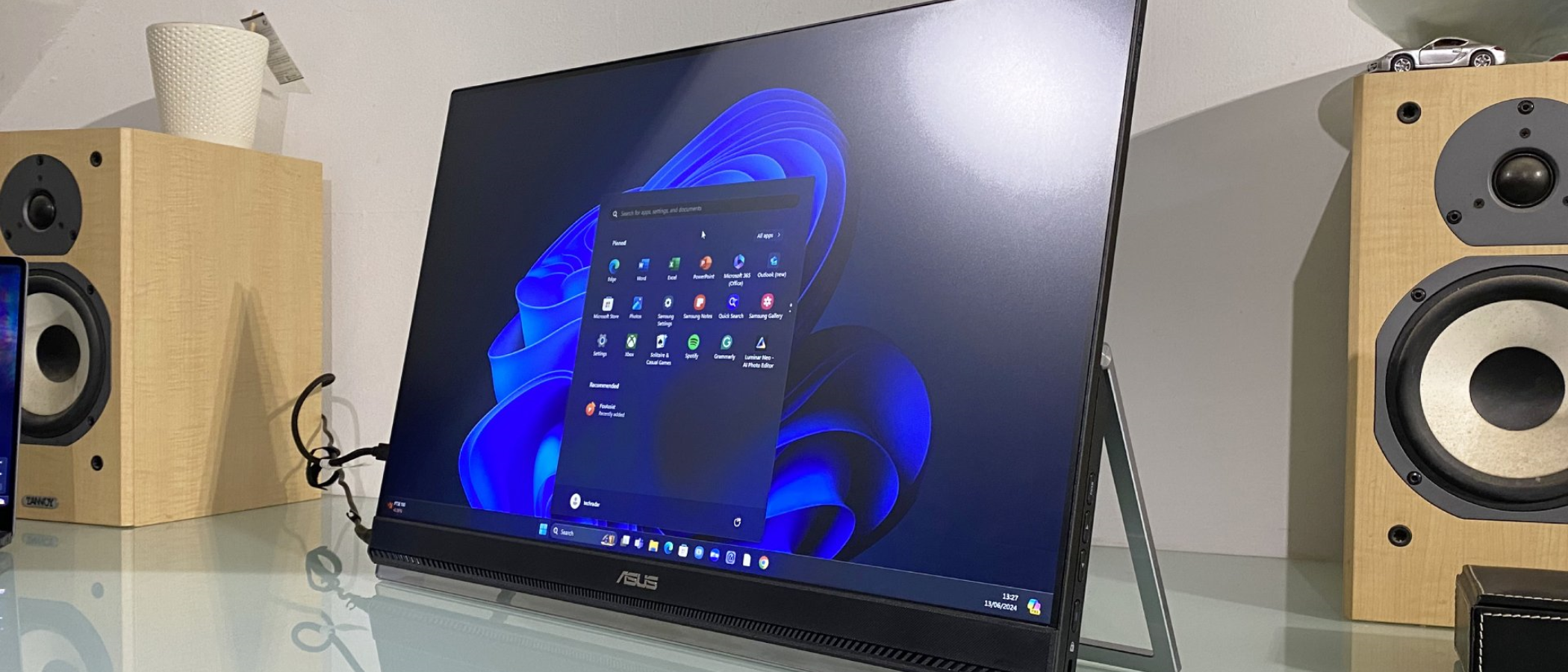TechRadar Verdict
A portable monitor with USB-C connectivity including power delivery sounds appealing. But Asus has missed the mark with this disappointing, low resolution and not-all-that-portable 24-inch panel.
Pros
- +
USB-C with 60W power delivery
- +
Lots of installation options
- +
Reasonably well calibrated
Cons
- -
Low pixel density
- -
Awful speakers
- -
Not hugely portable
Why you can trust TechRadar
Laptops come in nearly all shapes and sizes. However, there is an upper realistic limit to screen size. Which is where the best portable monitors fit in.
The new Asus Zenscreen MB249C is an example on the larger side of portable screens. At 24 inches, it's much bigger than any laptop display. But, in theory at least, this portable monitor gives you the option of something bigger on the move. Obviously at 24 inches and 2.8kg, this isn't something you're going to slip into your shoulder bag. But with its integrated kickstand, speakers and USB-C with 60W of power delivery, you could leave your laptop charger behind and pack this screen instead.
The idea isn't so much pulling this screen out at a coffee shop or the airport. Moreover, it gives you a reasonably portable way of achieving a more ergonomic desktop monitor experience at multiple locations.
The Asus Zenscreen MB249C also comes with a C-clamp stand that provides a more permanent desk setup but also sports a quick-release mechanism, plus a frame kit that allows the screen to be hung from the top of office partitions. A little niche, perhaps, but this monitor certainly gives you lots of install options.
If there is a catch it's that it's limited to 1080p resolution and 75Hz refresh. Given the panel size, that's perhaps not a huge surprise. But a higher resolution would have been an interesting way of achieving a premium computing experience on the move. As it is, the pixel density is very low, albeit the panel sports IPS technology, which bodes well for other aspects of image quality.
Asus Zenscreen MB249C: Design & features
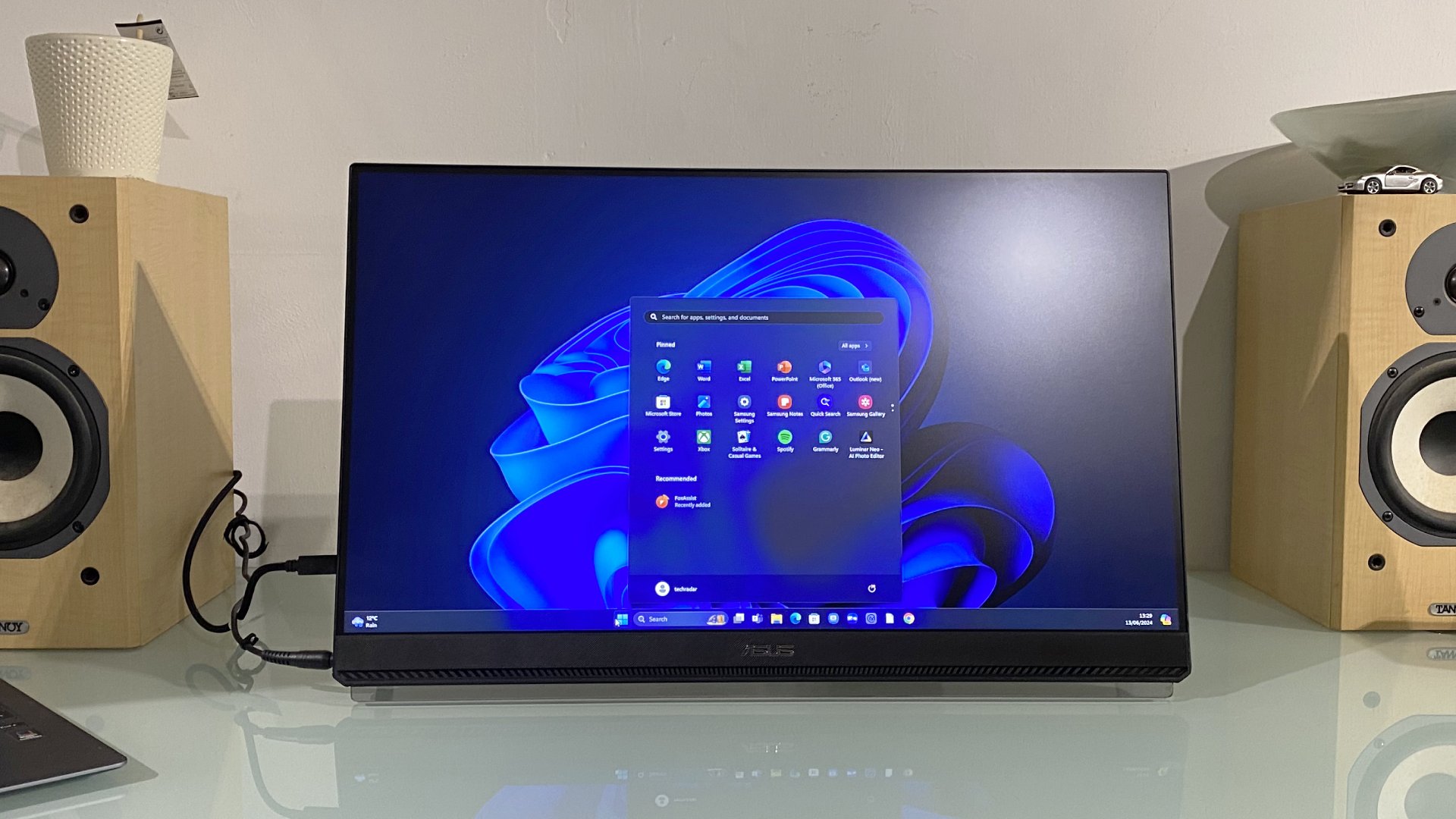
- Lots of installation options
- Slim bezels
- Not actually all that portable
Panel size: 24-inch
Panel type: IPS
Resolution: 1,920 x 1,080
Brightness: 250 cd/m2
Contrast: 1,000:1
Pixel response: 5ms
Refresh rate: 75Hz
HDR: No
Vesa: 100mm x 100mm
Inputs: DisplayPort 1.4 x1, HDMI 2.0 x1, Thunderbolt 4 / USB-C with 90W power delivery x1
Other: C-clamp with quick release, partition frame
The Asus Zenscreen MB249C's 24-inch panel is both a blessing and a curse. The upside is that you get far more screen real estate than any laptop. The downside is that it's not actually all that portable.
The built-in kickstand does mean that the overall unit, which measures 53.93 by 34.63 by 2.36 centimetres, is fairly slim. The slim bezels on three sides of the panel keep the proportions in check, too. But it's not all that much smaller than a conventional monitor with the clip-in stand removed. At 2.8kg, it's not exactly ultra-light, either, though it is certainly lighter than most conventional monitors of a similar size.
Still, put it this way. It's a pretty narrow use case where you'd be happy to take this monitor with you, but for those that do, this display is reasonably well thought out.
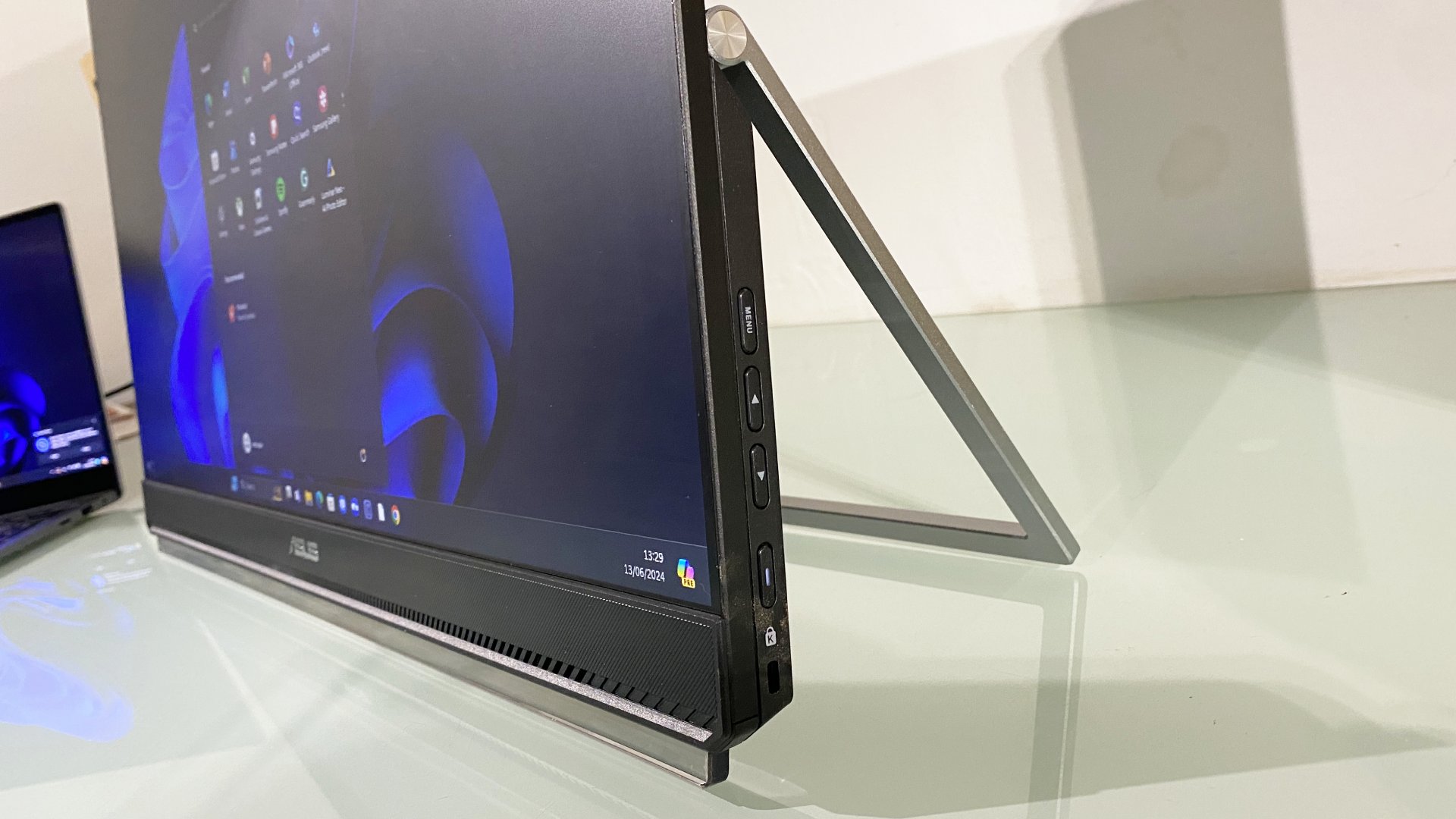
The kickstand on the rear doubles as a carry handle and the USB-C input has 60W of power delivery. So, you can leave your laptop charger behind and power it from the MB249C. There's also an HDMI input, so connecting to most device types shouldn't be a problem.
In terms of other more permanent and semi-permanent installation options, included in the box is a C-clamp arm with a pivot arm for fixing the screen to a desk. It adjusts for not only tilt, swivel and rotation into portrait mode, but also up to 144mm of extension.
So, you could have that as your daily setup, and then pull the screen off from the quick-release attachment and use the kickstand on the move. There's also a frame that allows it to be hung from the top of office partition walls and offers 150mm of height adjustment.
Asus Zenscreen MB249C: Performance
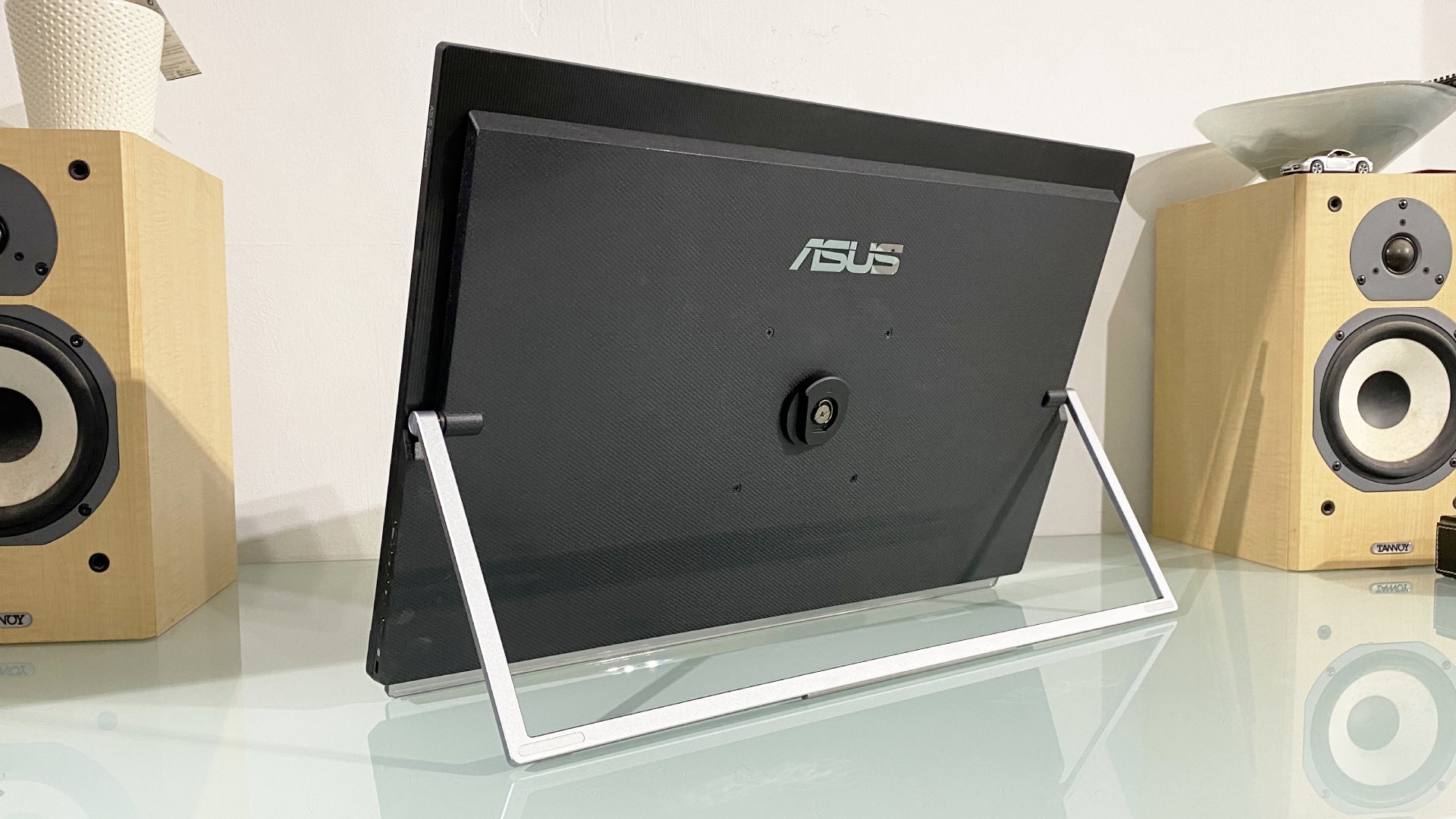
- Low pixel density
- No HDR support
- Terrible speakers
A few years ago, the specifications and performance of this display would have been unremarkable. Here in 2024, it all feels a little dated.
The Asus Zenscreen MB249C runs what would have been a perfectly adequate 24-inch panel. It's IPS, so the colours are pretty accurate and the viewing angles are good. It's actually reasonably bright, too, and in that regard far exceeds the lowly expectations set by the very modest 250 nit specification.
There's no HDR support at all, however, and the refresh rate tops out at 75Hz. There is adaptive refresh support, but the low refresh rate and mere 5ms response are hardly the stuff of gaming joy. That's tolerable for many productivity applications, of course, but it's also all pretty low spec by today's standards.
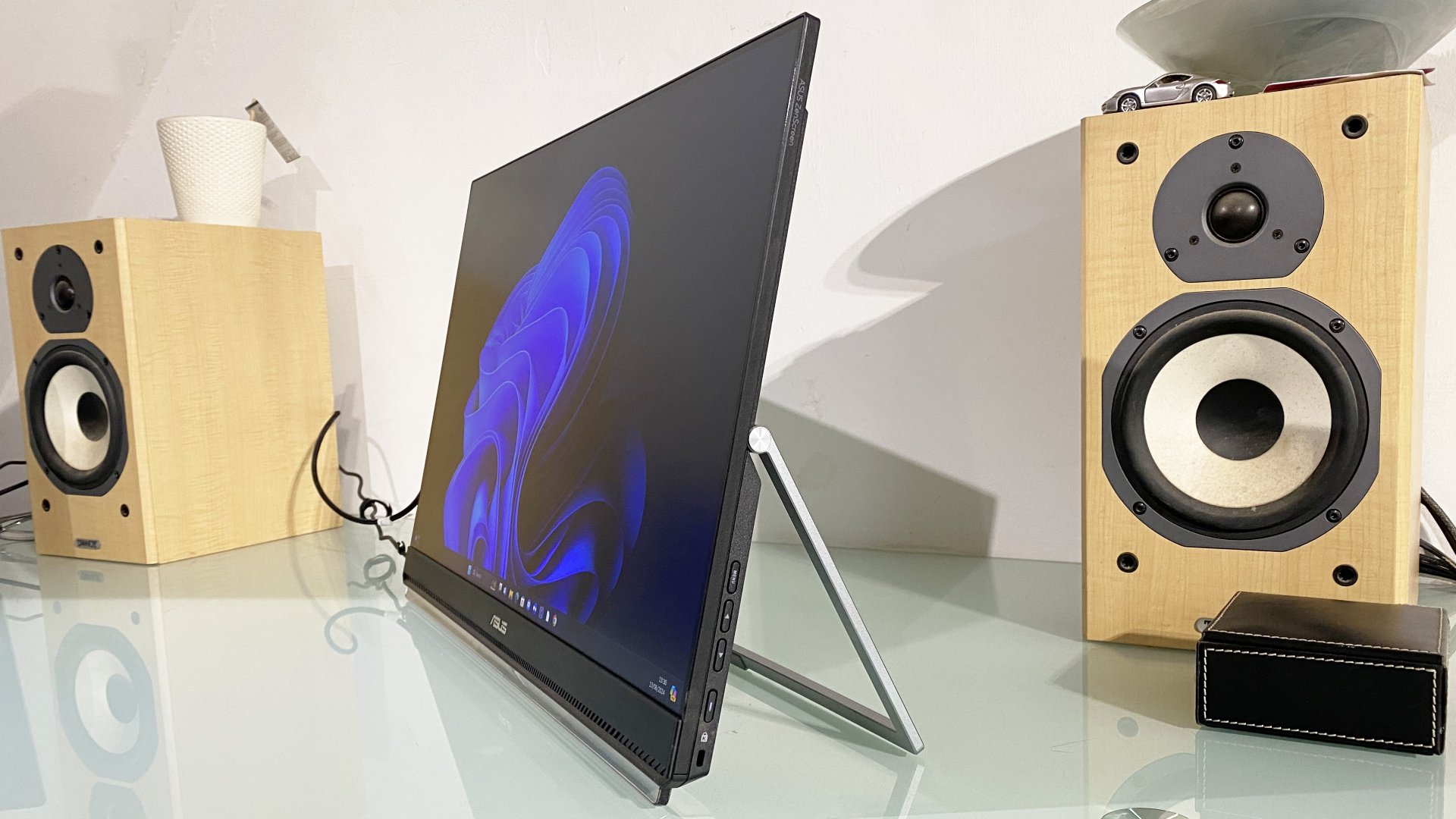
More of a problem is the poor pixel density. The native resolution of 1,920 by 1,080 on a 24-inch panel makes for pretty big, blocky pixels. That makes for pretty rough looking fonts and icons, and generally not a lot of image detail. It also means that you've got no more usable desktop real estate than most laptops. If anything, you might have less, depending on how you have your scaling set up.
Moreover, this monitor would be so much more appealing with a higher resolution of at least 2,560 by 1,600. You'd have nicer, sharper fonts plus the option of more working space. As it is, the experience feels a little low rent and dated. You'd really have to want the portability aspect an awful lot to put up with it.
As for the built-in speakers, they're absolutely awful, with a harsh and thin tone, plus little volume on offer. Even a budget laptop will have as good or better speakers, and something like a MacBook Air let alone a MacBook Pro is on another level for audio quality. In truth, the speakers would have been better left out, they're borderline useless.
Asus Zenscreen MB249C: Final verdict
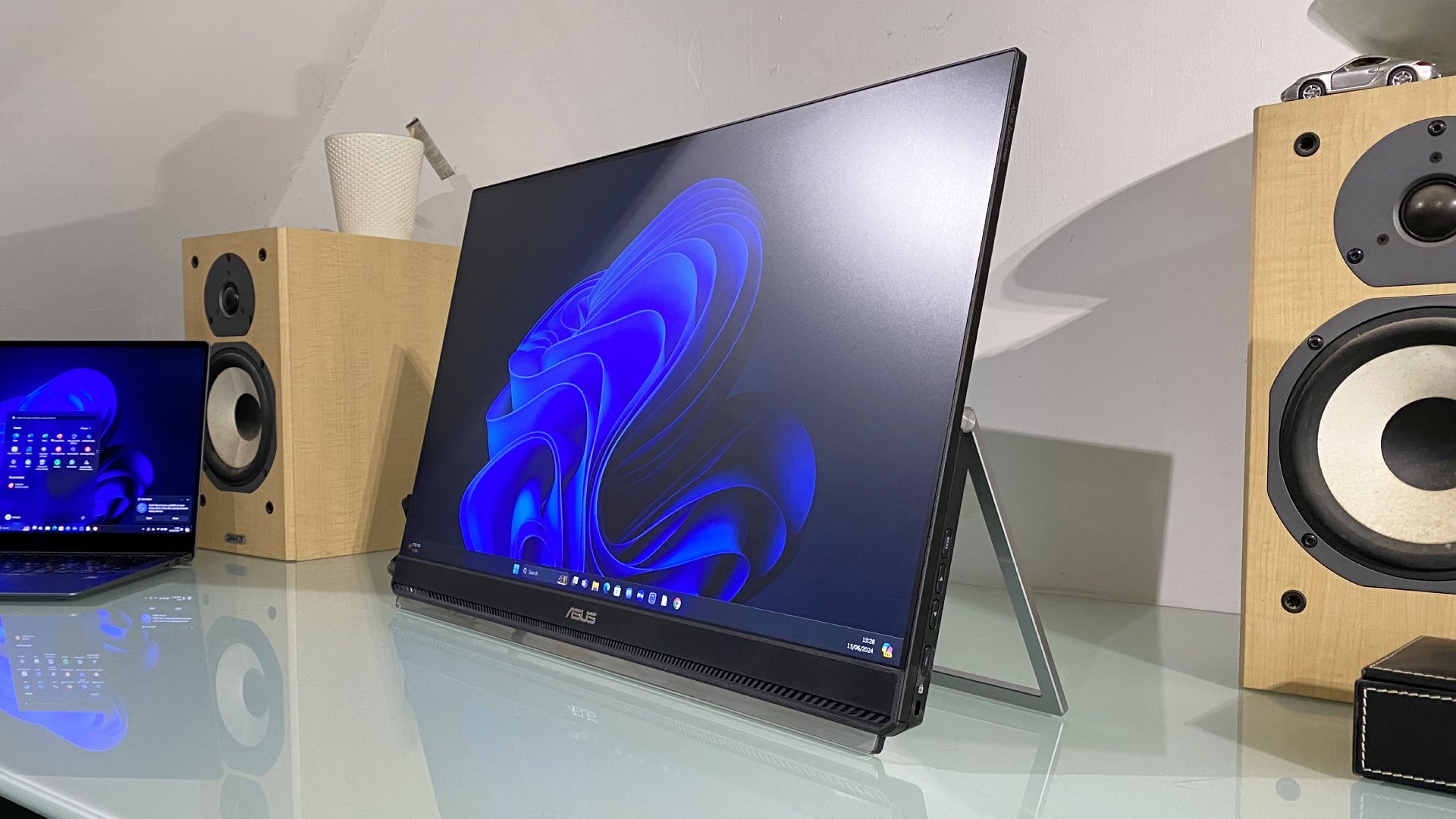
This is not a terrible monitor. It's well calibrated and offers reasonable image quality from its IPS panel. However, the low pixel density makes for a dated viewing experience, with rough looking fonts. It also means that you're not getting much desktop working space, which surely defeats the whole object of lugging around what isn't a hugely portable device—namely to give you that extra space. The audio quality from the speakers is horrendous, too.
There are some nice features. The C-clamp with pivot arm is a welcome extra. The USB-C with 60W of power delivery also means you won't need to bring your laptop's power supply with you.
But overall, the limited portability and poor pixel density combine to compromise the appeal and utility of the Asus Zenscreen MB249C fairly comprehensively. It's just not a product that will make sense save for a very limited set of niche use cases.
For more screen recommendations, we reviewed the best business monitors
Technology and cars. Increasingly the twain shall meet. Which is handy, because Jeremy (Twitter) is addicted to both. Long-time tech journalist, former editor of iCar magazine and incumbent car guru for T3 magazine, Jeremy reckons in-car technology is about to go thermonuclear. No, not exploding cars. That would be silly. And dangerous. But rather an explosive period of unprecedented innovation. Enjoy the ride.
